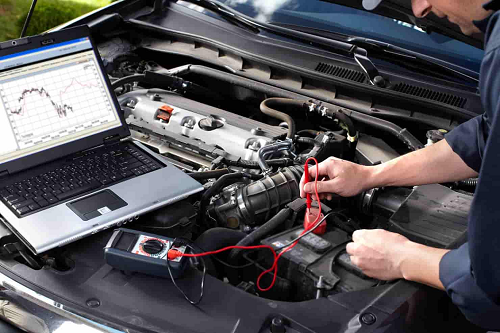Section 9-5: Operating and Maintaining a Vehicle
Section 9-5: Operating and Maintaining a Vehicle
Overview

 Operating and maintaining a vehicle involves a combination of regular upkeep, safe driving practices, and being prepared for unexpected situations. Here's a guide to help you understand the key aspects of operating and maintaining a vehicle:
Operating and maintaining a vehicle involves a combination of regular upkeep, safe driving practices, and being prepared for unexpected situations. Here's a guide to help you understand the key aspects of operating and maintaining a vehicle:
Regular Maintenance:
- Oil Changes: Regularly change the engine oil and oil filter according to the manufacturer's recommendations to keep the engine running smoothly.
- Fluid Levels: Check and top up fluids such as coolant, transmission fluid, brake fluid, and windshield washer fluid regularly.
- Tire Maintenance: Check tire pressure, tread depth, and overall condition regularly. Rotate tires as recommended and replace them when necessary.
- Brake Inspection: Regularly inspect brake pads, rotors, and brake fluid levels. Replace brake pads and have the braking system serviced as needed.
- Battery Care: Check the battery terminals for corrosion, clean them if necessary, and ensure the battery is securely mounted. Test the battery's voltage and replace it if it's old or weak.
- Air Filter: Replace the engine air filter as recommended to maintain proper airflow and engine performance.
- Belts and Hoses: Inspect belts and hoses for signs of wear or damage and replace them if necessary to prevent breakdowns.
- Scheduled Maintenance: Follow the manufacturer's recommended maintenance schedule outlined in the owner's manual to address specific maintenance tasks at designated intervals.
Safe Driving Practices:
- Defensive Driving: Practice defensive driving techniques to anticipate and react to potential hazards on the road.
- Obey Traffic Laws: Follow speed limits, obey traffic signals and signs, and use turn signals and headlights as required by law.
- Avoid Distractions: Minimize distractions while driving, such as using cell phones, eating, or adjusting controls, to maintain focus on the road.
- Maintain Distance: Leave ample space between your vehicle and the vehicle in front of you to allow for safe braking and maneuvering.
- Stay Alert: Avoid driving while fatigued or under the influence of alcohol or drugs. Take breaks as needed during long trips.
Emergency Preparedness:
- Carrying Essentials: Keep essential items in your vehicle, such as a spare tire, jack, lug wrench, jumper cables, flashlight, first-aid kit, and emergency supplies like water and non-perishable snacks.
- Know How to Change a Tire: Learn how to change a flat tire safely and practice the procedure before you need to do it on the road.
- Emergency Contact Information: Keep a list of emergency contacts, including roadside assistance services and your insurance provider's contact information, readily accessible in your vehicle.
Professional Servicing:
- Mechanical Issues: If you notice any unusual noises, vibrations, or warning lights while driving, have your vehicle inspected by a qualified mechanic promptly to diagnose and address any mechanical issues.
- Scheduled Inspections: Take your vehicle to a reputable mechanic for scheduled inspections and servicing to identify and address potential problems before they escalate.
By following these guidelines for operating and maintaining your vehicle, you can ensure its longevity, reliability, and safety on the road. Regular maintenance, safe driving habits, and preparedness for emergencies are essential for the overall well-being of both you and your vehicle.
Videos (Click on Image to View Videos)
Online Textbook Read Section 9-5: (Operating and Maintaining a Vehicle)
